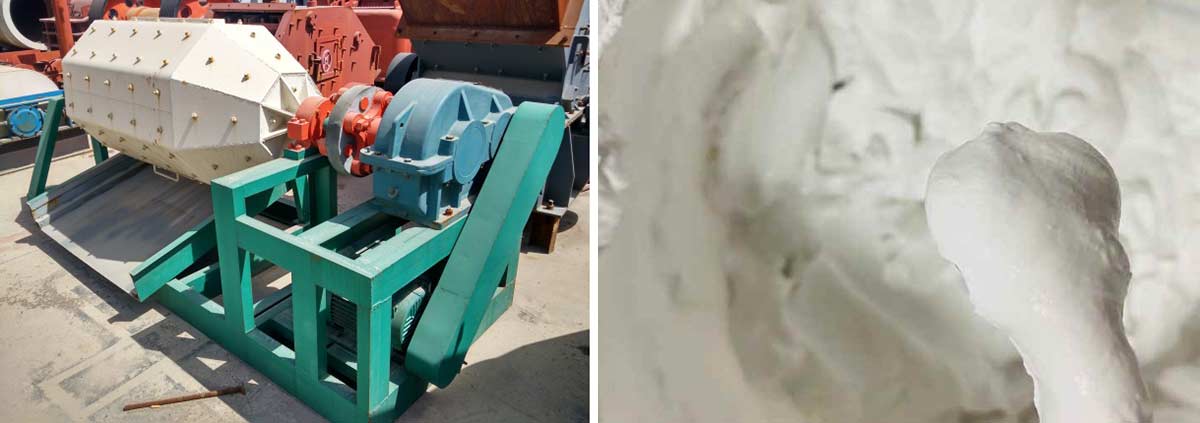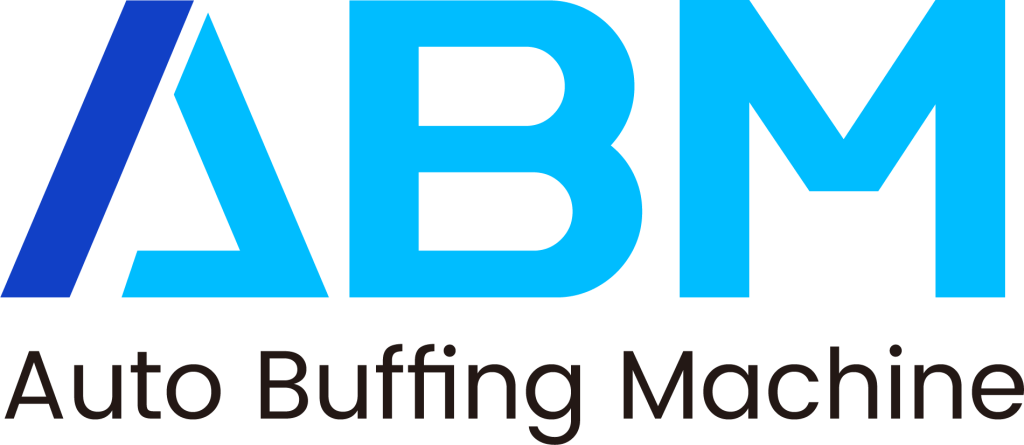

Auto polishing compounds play a critical role in achieving smooth, high-quality finishes in industrial applications. Selecting the right compound ensures optimal performance, reduces material waste, and enhances the durability of polished surfaces. Over time, traditional compounds have evolved into advanced formulations, offering improved efficiency and precision. This shift has transformed how industries approach polishing tasks, especially with the integration of auto polishing compounds. By comparing traditional and modern options, businesses can make informed decisions that align with their specific needs and long-term goals.
Key Takeaways
- Picking the right metal polish is important for great results.
- Old compounds work well and are cheap but can be unsafe.
- New compounds use better tech for safer and greener polishing.
- Machines with new compounds give steady results and save money.
- Think about your needs and future benefits before choosing a type.
Overview of Traditional Metal Polishing Compounds
Definition And Characteristics
Traditional metal polishing compounds are abrasive materials designed to smooth and enhance the surface of metals. These compounds often consist of natural or synthetic abrasives combined with waxes or binders. They are applied using buffing wheels or polishing pads to achieve the desired finish. Each compound is tailored to specific metals and applications, offering varying levels of abrasiveness and polishing capabilities.
| Compound | Characteristics |
|---|---|
| Stainless Steel | Good cutting compounds, necessary for hard metals. |
| Ferric Oxide | Foundation of jewelers rouge, synthetic rust, red in color. |
| Zirconium | Soft cutting, good for finishing chrome and stainless, progressively finer with use. |
| Tripoli | Hard cutting, breaks down quickly, available in various grades for softer metals. |
| Chromium Oxide | Finer cut than tripoli, suitable for chrome and stainless, often used in dental and jewelry. |
| Aluminum Oxide | Hardest naturally occurring compound, good for aluminum and soft alloys. |
| Aluminum Silicate | Soft cutter, gives beautiful luster, slow on harder metals. |
| Calcined Aluminum Oxide | Superfine, expensive, gives an awesome finish, slow abrasive. |
| Silicone Carbide | Aggressive abrasive, breaks down quickly. |
| Silica | Most common abrasive, very good in lower grits. |
Strengths Of Traditional Compounds
Traditional polishing compounds excel in versatility. They work effectively on a wide range of materials, including aluminum, stainless steel, brass, and copper. Their ability to restore and enhance the appearance of metal parts makes them indispensable in industries like automotive, cookware, and decorative arts. For example, compounds like Tripoli and Ferric Oxide are widely used to achieve a bright, reflective finish on softer metals. Additionally, traditional compounds are cost-effective and readily available, making them a practical choice for many industrial applications.
Drawbacks Of Traditional Compounds
Despite their strengths, traditional compounds have limitations. Many contain harsh chemicals that pose safety risks during handling and application. Their abrasive nature can lead to excessive material removal, especially on softer metals, resulting in surface damage. Furthermore, traditional compounds often generate significant waste, complicating disposal and raising environmental concerns. They also require manual application techniques, which can be time-consuming and inconsistent, particularly for large-scale operations.
Traditional compounds remain a reliable choice for many applications, but their drawbacks highlight the need for innovation in metal polishing technology.
Overview of New Metal Polishing Compounds
Definition And Key Features
New metal polishing compounds represent a significant advancement in surface finishing technology. These compounds are formulated with innovative chemicals and materials designed to deliver superior results. Unlike traditional options, they often incorporate nanotechnology or specialized abrasives that enhance precision and efficiency. Many of these compounds are compatible with auto polishing compounds, making them ideal for industries that rely on automated systems. Their versatility allows them to cater to a wide range of metals, from soft alloys to hard stainless steel, while minimizing material loss.
Key features of these compounds include reduced environmental impact, improved safety during handling, and enhanced durability of polished surfaces. Manufacturers often design them to work seamlessly with modern polishing equipment, ensuring consistent results across large-scale operations. This makes them a preferred choice for industries seeking high-quality finishes with minimal waste.
Benefits Of New Compounds

New metal polishing compounds offer several advantages over traditional options. They excel in industries such as automotive, aerospace, electronics, and jewelry. In the automotive sector, these compounds restore the shine of metal components, reduce friction, and enhance performance. In the jewelry industry, they transform raw metals into polished ornaments, eliminate scratches, and restore luster to dull pieces. Their ability to deliver high-quality finishes makes them indispensable in applications where aesthetics and precision are critical.
These compounds also align with modern sustainability goals. Many formulations use eco-friendly ingredients, reducing the environmental footprint of polishing processes. Their compatibility with auto polishing compounds enhances efficiency, as automated systems can apply them evenly and consistently. This reduces labor costs and ensures uniform results, even for complex shapes and surfaces.
Limitations Of New Compounds
Despite their benefits, new metal polishing compounds face challenges. High production costs arise from the need for specialized tools and purification procedures. Research and development investments further increase financial strain. Additionally, competition from cheaper alternatives creates a barrier to widespread adoption. Companies must also overcome obstacles in maintaining market supply and product quality.
The market for these compounds remains competitive, with businesses striving to balance innovation and affordability. While their advanced features justify the cost in many cases, some industries may hesitate to switch due to budget constraints. This highlights the importance of evaluating specific needs and long-term benefits when considering these compounds.
Comparative Analysis: Traditional vs New Polishing Compounds
Performance
Effectiveness On Various Metals
Traditional and new metal polishing compounds differ significantly in their effectiveness across various metals. Traditional compounds, such as Tripoli and Ferric Oxide, work well on softer metals like brass and copper. However, they may struggle with harder metals, requiring more effort and time. New compounds, on the other hand, utilize advanced formulations to handle a broader range of metals, including stainless steel and titanium, with greater precision.
Different polishing methods also influence performance. Mechanical polishing, often used with traditional compounds, delivers high-quality finishes but demands skilled technicians and is unsuitable for fragile parts. Chemical polishing, compatible with both traditional and new compounds, smooths micro-roughnesses and creates a mirror-like finish. However, it may result in inconsistent brightness. Electropolishing, frequently paired with new compounds, uses electric currents for better control, producing corrosion-resistant finishes ideal for complex geometries.
Durability And Surface Quality
Traditional compounds can achieve durable finishes but may cause excessive material removal, especially on softer metals. This can compromise surface integrity over time. New compounds, designed with advanced abrasives and nanotechnology, minimize material loss while enhancing surface durability. They produce smoother, brighter finishes that resist wear and corrosion, making them suitable for industries requiring long-lasting results.
Cost
Initial Investment Vs Long-Term Value
Traditional compounds have a lower initial cost, making them accessible for small-scale operations. However, their manual application methods and higher material waste can increase long-term expenses. New compounds, while more expensive upfront, offer better efficiency and reduced waste. Their compatibility with metal polishing compounds further enhances cost-effectiveness by streamlining processes and reducing labor costs.
Cost-Effectiveness In Different Applications
Traditional compounds remain cost-effective for simple tasks and smaller projects. In contrast, new compounds excel in large-scale industrial applications. Their ability to deliver consistent results with minimal waste justifies the higher initial investment. Industries like aerospace and automotive benefit significantly from the long-term value provided by these advanced formulations.
Environmental Impact
Chemical Safety And Composition
Traditional compounds often contain harsh chemicals that pose safety risks. In contrast, new compounds prioritize eco-friendly ingredients. For example, trivalent chromium plating replaces toxic hexavalent chromium, meeting regulatory standards while reducing toxicity. Advanced technologies like physical vapor deposition (PVD) and powder coating further minimize hazardous emissions.
Disposal And Sustainability Considerations
Traditional compounds generate significant waste, complicating disposal and raising environmental concerns. New compounds address these issues by using sustainable materials and processes. Treated metals retain their integrity, facilitating easier recycling and reuse. These advancements align with modern sustainability goals, making new compounds a more environmentally responsible choice.
Ease of Use
Application Techniques
Traditional metal polishing compounds often require manual application, which demands skill and precision. Operators must apply the correct amount of pressure to the buffing wheel to avoid overheating, which can cause a hazy finish. Improper techniques may warp the metal, while contamination from steel can discolor stainless steel. These challenges make manual polishing a labor-intensive process that requires significant training and experience.
New polishing compounds simplify application techniques by integrating with modern equipment. Many are designed for use with automatic polishing machines, which eliminate the need for manual intervention. These machines apply compounds evenly, ensuring consistent results. Additionally, new compounds often feature user-friendly formulations that reduce the risk of errors during application. This makes them a practical choice for industries seeking efficiency and precision.
Maintenance And Cleanup Requirements
Traditional compounds generate significant residue during the polishing process. This residue requires thorough cleaning to prevent contamination of subsequent workpieces. The waxes and binders in these compounds can also accumulate on equipment, increasing maintenance needs. Frequent cleaning of buffing wheels and pads becomes necessary to maintain performance.
New metal polishing compounds address these issues with cleaner formulations. Many produce minimal residue, reducing cleanup time and effort. Their compatibility with automated systems further streamlines maintenance, as machines often include self-cleaning features. This reduces downtime and ensures consistent performance over extended periods.
Role Of Auto Polishing Compounds
Integration With Automated Systems
Auto polishing compounds integrate seamlessly with modern automated systems. These systems operate continuously with minimal human intervention, enhancing efficiency and consistency. Automated polishing machines adhere to precise specifications, ensuring uniform quality across production runs. They can also connect with other manufacturing equipment, such as robotic arms and conveyor systems, to streamline production and reduce bottlenecks. This integration makes automatic polishing compounds an essential component of modern industrial processes.
Efficiency And Consistency In Results

Auto polishing compounds deliver unmatched consistency and precision. Automated machines apply these compounds evenly, producing high-quality finishes without inconsistencies. They excel at polishing complex shapes and surfaces, which are challenging to handle manually. These machines also operate faster than manual methods, eliminating inefficiencies caused by human fatigue. By reducing the risk of scrapped parts due to errors, they offer significant cost savings. Industries benefit from increased production speed, lower operational costs, and uniform quality, making automatic polishing compounds a valuable investment.
Conclusion
Choosing between traditional and new auto polishing compounds depends on specific needs and priorities. Traditional compounds require skilled operators, often leading to inconsistent finishes and slower production. New compounds, especially when paired with automatic systems, deliver precise, consistent results while improving efficiency. They also reduce environmental impact by trapping harmful dust and using eco-friendly materials. Businesses should evaluate their goals, balancing initial costs with long-term value. Exploring advanced options like auto polishing compounds can enhance productivity and sustainability, making them a smart investment for industries seeking high-quality finishes.
